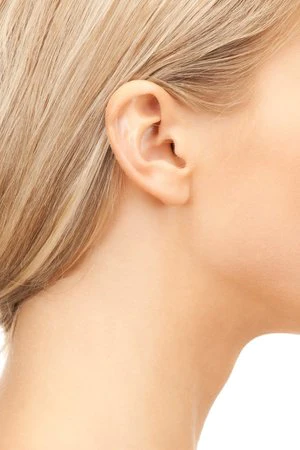Otoplasty in Mumbai – Ear Reshaping Surgery
Correct protruding or misshapen ears with safe, natural-looking ear correction by Dr. Manwani
Do you feel self-conscious about large, protruding, or misshapen ears? Otoplasty, also known as ear reshaping surgery, is a safe and effective cosmetic procedure that improves the size, shape, and position of the ears, enhancing facial harmony.
At Cosmetic Surgery Mumbai, we specialize in advanced otoplasty techniques to help children, teenagers, and adults achieve natural-looking, well-proportioned ears with minimal downtime.
What is Otoplasty?

Otoplasty is a cosmetic ear surgery designed to:
1. Pin back prominent ears closer to the head
2. Correct asymmetrical or misshapen ears
3. Reduce the size of large ears (Macrotia)
4. Reshape earlobes damaged by trauma or heavy earrings
5.Improve congenital ear deformities
This procedure enhances facial symmetry and boosts self-confidence, especially for individuals who feel uncomfortable with the appearance of their ears.
Types of Otoplasty Procedures
1. Ear Pinning Surgery (Prominent Ear Correction)
Ideal for ears that stick out too far
Creates a natural ear position closer to the head
Performed with hidden incisions behind the ear
2. Ear Reduction Surgery (Macrotia Correction)
Reduces overly large ears
Reshapes ear cartilage for a proportional appearance
3. Ear Reconstruction Surgery
Corrects birth defects, trauma, or previous surgery complications
Uses cartilage grafts or other advanced techniques
4. Earlobe Repair Surgery
Fixes torn, stretched, or gauged earlobes
Suitable for ear damage due to heavy earrings or piercings
Our expert surgeon will recommend the best technique based on your aesthetic goals.
Benefits of Otoplasty at Cosmetic Surgery Mumbai
1. Permanent correction of protruding or large ears
2. Enhances facial symmetry & overall appearance
3. Boosts self-esteem & confidence
4. Minimally invasive with quick recovery
5. Hidden incisions for natural-looking results
Many patients, especially children and teenagers, experience improved confidence and comfort after otoplasty.
Who is a good candidate for Otoplasty
You may be an ideal candidate if you:
1.Feel self-conscious about the size or shape of your ears
2.Have protruding ears that affect facial balance
3.Are in good health with realistic expectations
4.Are a child (above 5 years old) or an adult seeking ear correction
A detailed consultation will help determine the best approach for you.
OTOPLASTY PROCEDURE - COSMETIC SURGERY MUMBAI
Depending on the patient’s preferences and the surgeon’s advice, otoplasty can be performed under general anaesthesia or local anaesthesia combined with intravenous sedation. The patient will be thoroughly sedated before incisions are performed behind the ears. All incisions will be discretely placed and concealed between the skin’s and ears’ organic folds. The surgeon can access the underlying cartilage and tissue after making the proper incisions.
Excess cartilage may be removed during surgery, although most of the time it merely has to be adjusted or repositioned. The incisions will be sutured shut once the ear has been successfully reshaped. After surgery, non-removable sutures may stabilise the ears and stop any further movement. For individuals who are younger and whose ears may be more amenable to reshaping, dissolvable or detachable sutures are occasionally appropriate.
The treatment typically takes two hours or less, requires no hospitalisation, and produces effects that last a lifetime. The day after surgery, patients can go back to their homes.

RECOVERY AND RESULTS - OTOPLASTY MUMBAI
Bruising, swelling, tenderness, and hurting for one to two weeks are otoplasty side effects. For a few weeks following surgery, the ears may feel stiff or sore. To keep the ears in place while they recover, a compression dressing will be applied to them. The dressing is often taken off after 48 hours, at which point a supporting, floppy headband should be worn at night to guard against ear injury.
Patients will need to take roughly a week off from their typical activities, such as going to work or school. In about two weeks, the most obvious adverse effects, such as bruising and swelling, will go away. After three weeks, you can start doing exercise and other demanding activities again. In order to prevent ear damage, contact sports should be avoided for six to eight weeks. Proper head protection should also be worn.
Results will be visible right away, but they won’t be fully visible for four to six weeks after the operation. It will take several months for the swelling to entirely go down, and throughout this period the ears might continue to adjust. Incision scars take 12 to 18 months to fully develop. Scars that have fully developed will be small, white, and barely discernible.
Before & After - Otoplasty Mumbai
PATIENT TESTIMONIALS

WHY CHOOSE DR. MANOJKUMAR J MANWANI ?
Choosing a surgeon with extensive proficiency in the field and multifaceted training is crucial to having a pleasant and rewarding surgical experience. As a pioneer in the field of plastic surgery, Dr. Manojkumar J Manwani treats every otoplasty procedure with artistic rigour and considerate care, ensuring that patients receive the best possible cosmetic outcomes.
FREQUENTLY ASKED QUESTIONS
You are probably an excellent candidate for otoplasty if you suffer from bulging or big ears that negatively affect your self-image. Schedule an appointment with us to learn more about this technique if you frequently turn to wearing hats or a certain hairdo to disguise your ears. If you are a good candidate for this operation, we may assess your ears and make that determination.
The effects of ear pinning are long-lasting. After your otoplasty has healed, you can enjoy your new appearance for years to come. There is a small chance that the ears will revert to their natural position in adult otoplasty patients. We take all required precautions to prevent this from happening to our patients, including the use of non-removable sutures.
Behind the ear, scars will be entirely concealed. To make our incisions as undetectable as possible, we place them within the ear’s natural folds. Scars won’t be noticeable and will be extremely small once they’ve matured. Longer hairstyles can readily conceal scarring, though most patients don’t need this because their scars are so hard to see.
Before having your ears wet after surgery, you will need to wait until your bandages have been taken off, which should take about 48 hours. Swimming and other water activities must be avoided for the first two weeks or until your incisions have fully healed.
Absolutely. Some people don’t need to pin back both ears since they have asymmetrical ears. By mimicking the placement of the opposing ear, we may create symmetry here by working only on one side.
Also Visit
BOOK YOUR CONSULTATION
START YOUR JOURNEY
If you have any questions or would like to book an appointment with Dr Manwani, please contact us.
BOOK YOUR CONSULTATION
START YOUR JOURNEY
If you have any questions or would like to book an appointment with Dr Manwani, please contact us.